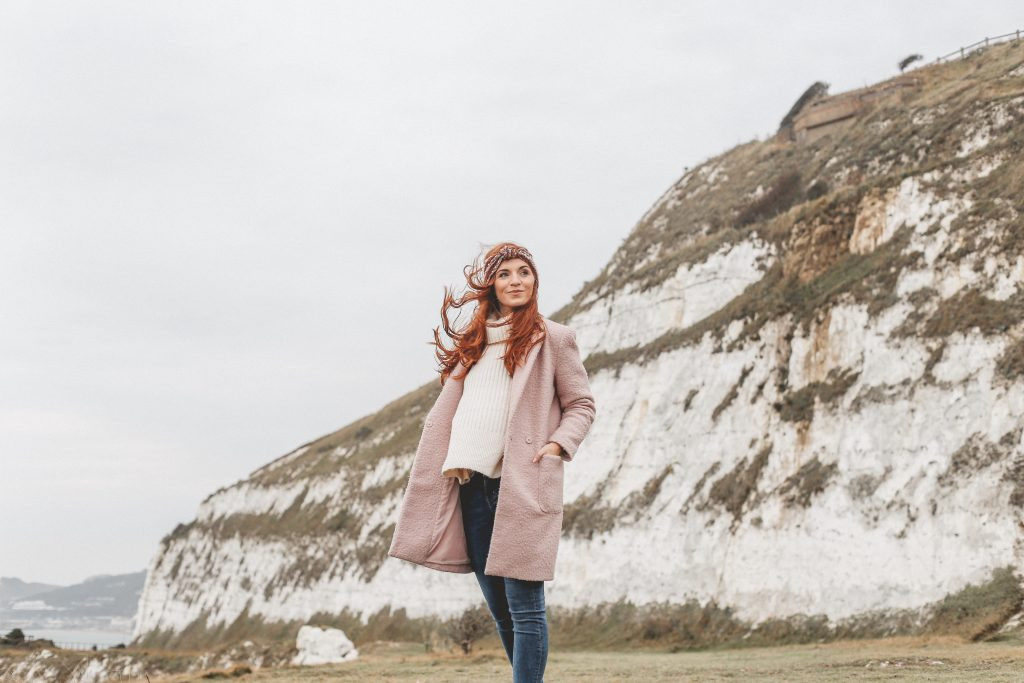 Woman in a white dress standing in front of a brick wall
Woman in a white dress standing in front of a brick wall
Are you a content creator, a travel enthusiast, or simply someone who wants to capture life’s moments beautifully? In today’s visually driven world, having compelling photos of yourself is more important than ever, whether it’s for building your personal brand online or documenting your adventures around the globe. Forget the myth of “pics or it didn’t happen” and embrace the reality: capturing yourself in photos allows you to authentically share your story and connect with others.
While the idea of needing photos might sometimes feel self-centered, it’s crucial to reframe this perspective. For entrepreneurs and businesses, personal branding through photography is a proven strategy to build trust and engagement. For travelers, photos become cherished visual diaries, preserving memories and experiences in a deeply personal way. As photographers ourselves, we understand the desire to be part of the narrative, to visually express our presence within the moments we capture. And let’s be honest, who doesn’t love a great travel photo of themselves in an epic location?
This guide is dedicated to empowering you with the knowledge and practical tips you need to confidently take stunning photos of yourself, without relying on a photographer. Let’s dive into the essential techniques to master the art of self-photography.
Tip 1: Master Remote Control & Timer Options for Seamless Self-Shoots
Gone are the days of awkward running and guessing games with camera timers. Technology offers incredible tools to make taking photos of yourself efficient and enjoyable. Whether you prefer the sophistication of smartphone apps or the simplicity of a wireless remote, controlling your camera remotely is a game-changer.
Camera Apps: The Modern Game Changer
For many modern cameras, especially those from brands like Canon, Nikon, and Sony, dedicated smartphone apps are available that revolutionize self-photography. The Canon Camera Connect App is a prime example, offering a live view of your camera’s sensor directly on your phone screen. This feature is invaluable as it allows you to perfectly frame your shot and check focus in real-time. Beyond just triggering the shutter, these apps often provide control over camera settings like aperture, shutter speed, ISO, and even timer functions. The convenience and control they offer are unmatched, making them ideal for precise self-portraits. Keep in mind that camera app functionality relies on your camera having Wi-Fi capabilities to connect wirelessly with your smartphone.
Wireless Remotes: Affordable and Reliable
If your camera doesn’t support app connectivity or you prefer a simpler approach, a wireless remote is an excellent and budget-friendly alternative. These remotes are incredibly affordable, with many reliable options available for under $10 on platforms like Amazon. They are straightforward to use: simply pair the remote with your camera (usually via infrared or Bluetooth) and press a button to trigger the shutter. While they might not offer the live view functionality of apps, they provide a reliable way to take photos from a distance, giving you time to pose and compose yourself.
Timer Mode: The Classic, Yet Still Viable, Approach
The built-in timer on your camera remains a viable, albeit more time-consuming, option. Setting a timer, typically for 2 or 10 seconds, gives you a delay between pressing the shutter button and the photo being taken. While this method requires a bit more back-and-forth to check your framing and focus, it’s readily available on virtually every camera. To maximize your chances of sharp photos, pre-focus on a spot where you intend to stand. Experiment with different timer durations to find what works best for your workflow.
Tip 2: Creative Camera Support: Think Beyond the Tripod
A tripod is undoubtedly the most stable and professional way to support your camera for self-portraits, but it’s not always practical or available. The beauty of self-photography lies in its adaptability – you can get creative with everyday objects to prop up your camera and achieve fantastic results.
Tripods: The Foundation of Stability
Using a tripod offers unparalleled stability, ensuring sharp images, especially in low light or when using slower shutter speeds. A tripod provides precise control over camera height and angle, allowing for consistent framing across multiple shots. For travel photographers, compact and lightweight tripods are essential. Look for models that fold down small enough to fit in your carry-on luggage without adding significant weight. Investing in a good travel tripod is a worthwhile decision for serious self-portrait enthusiasts.
Everyday Objects: Embrace Resourcefulness
Don’t underestimate the potential of your surroundings! Nature and urban environments are full of potential camera supports. Sturdy walls, benches, rocks, fences, and even tree branches can be used to prop up your camera. The key is to ensure stability and security. Before placing your camera, test the object’s steadiness. Use your camera bag or jacket to further stabilize the camera and adjust the angle. Be mindful of the surface – avoid placing your camera on dirty or wet surfaces without protection.
Mini Tripods & Flexible Pods: Portable Versatility
For situations where space is limited or you need more flexibility than a standard tripod offers, mini tripods and flexible pods are excellent alternatives. Mini tripods are compact and lightweight, perfect for tabletop setups or low-angle shots. Flexible pods, like Joby Gorillapods, feature bendable legs that can be wrapped around objects like poles, branches, or railings, providing secure camera support in unconventional locations. These portable options are ideal for travel and on-the-go self-photography.
Tip 3: Patience is Key: Allocate Sufficient Time for Your Shoot
Taking photos of yourself is inherently more time-consuming than having someone else snap a picture. Accept this reality and plan accordingly. Rushing the process will likely lead to frustration and subpar results. Allocate ample time for your self-portrait sessions, allowing yourself to experiment, adjust, and refine your shots.
Self-photography often involves trial and error. You’ll need to adjust camera settings, framing, posing, and potentially relocate your setup multiple times to achieve the desired outcome. Factor in time for setting up your camera, checking focus and composition, reviewing images, and making adjustments. Rushing through these steps can lead to missed focus, poor framing, or unflattering poses.
If you’re shooting in a specific location, especially one with time constraints, like a popular tourist spot or a location with changing light, plan your shoot strategically. Arrive early to avoid crowds and secure your desired shooting spot. Scout the location beforehand to identify potential backgrounds and compositions. Having a plan in mind will help you maximize your shooting time and make the most of your self-portrait session. Remember, allowing yourself enough time reduces stress and increases the enjoyment of the creative process.
Tip 4: Battery Power: Ensure You Stay Charged and Ready
Remote camera control, live view apps, and reviewing images all contribute to increased battery drain on both your camera and smartphone. Running out of battery mid-shoot is a frustrating and easily avoidable setback. Prioritize power management to ensure your equipment stays charged throughout your self-photography adventures.
Carrying extra camera batteries is a fundamental practice for any photographer, and it’s especially crucial for self-portrait sessions where you might be relying on battery-intensive features. Fully charge all your batteries before heading out and keep spares readily accessible in your camera bag. For smartphone users, an external power bank is an indispensable accessory. Power banks can recharge your phone multiple times, ensuring you have enough power to control your camera app, review images, and stay connected throughout the day.
Consider investing in high-capacity batteries and a fast charger for your camera. This will minimize downtime and keep you shooting for longer periods. If you’re shooting in a location with access to power outlets, take advantage of charging opportunities during breaks. Proactive battery management is a simple yet essential step in ensuring a smooth and productive self-photography experience.
Tip 5: Embrace the Kindness of Strangers: When in Doubt, Just Ask
While mastering self-photography techniques is empowering, there are times when enlisting the help of a friendly stranger is the most practical and efficient solution. Don’t hesitate to ask for assistance, especially in public places or popular tourist destinations. Most people are happy to help, and it can lead to unexpected connections and great photos.
When approaching strangers, choose your approach wisely. Look for individuals or groups who seem approachable and relaxed, such as tourists, couples, or friendly-looking locals. Politely explain that you’re taking photos of yourself and ask if they would mind taking a few shots for you. To increase your chances of getting the photos you envision, provide clear and concise instructions. Show them the frame you’re aiming for, explain the composition, and even set the focus beforehand. A friendly and clear request is usually met with a positive response.
Interacting with strangers can also be a fun and enriching part of your travel experiences. It’s an opportunity to connect with people from different backgrounds, learn about local perspectives, and perhaps even make new acquaintances. While safety should always be a priority, most interactions with strangers are positive and can enhance your self-photography journey. Remember to be courteous, express your gratitude, and perhaps offer to return the favor by taking a photo of them in return.
By combining these five essential tips, you’ll be well-equipped to confidently take stunning photos of yourself in any situation. Embrace the creative freedom of self-photography, experiment with these techniques, and start capturing your unique perspective on the world. Don’t forget to share your self-portraits and connect with the dfphoto.net community online!

